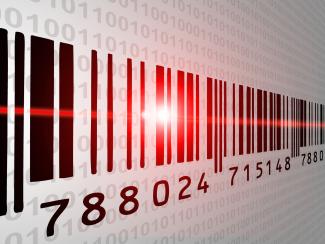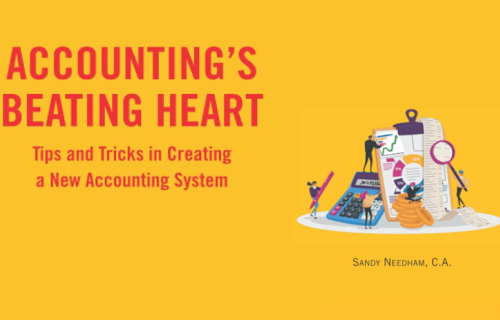While we were busy recently celebrating the 20th and 30th anniversaries of TPAC and Orchid Systems respectively, another milestone slid by. The humble barcode has just turned 50.
They say success has many parents, while failure is an orphan. The barcode clearly belongs in the former camp.
The key figures in the custody dispute are Bernard Silver and Norman Joseph Woodland, from Philadelphia, in one corner, and former IBM engineer George Laurer, in the other. A fair outcome might be to declare Silver & Woodland the grandfathers, and Laurer the father.
The date on the barcode’s birth certificate is also questionable. You can take your pick of these 3, for starters.
- 1952 was the year Silver and Norman were granted a patent for the concept.
The idea was spot-on but proved to be 20 years ahead of its time. The story goes that they were inspired by the ‘dot-dash-dot’ Morse Code beeps they learned in the Boy Scouts. (Their prototype used concentric circles, which proved impractical to print and read.)
- 3 April 1973 is generally regarded as the official date of birth.
This was when Laurer’s linear version, with which we are now so familiar, was approved as the industry standard.
- 26 June 1974 marked the first live retail use of a barcode
A 10-pack of Wrigley’s Juicy Fruit chewing gum was scanned at the checkout of Marsh’s supermarket, outside Troy, Ohio. (In reality, it was a staged publicity event, but a landmark nonetheless.)
If you’ve read this far and are curious to learn more about the back story, this Smithsonian article is a great place to start. It reads like the first draft of a movie script.
What’s not in dispute is the revolutionary impact of the barcode in retail, logistics, and beyond.
Here are some of the touted benefits of barcode technology:
- Efficiency: Items can be scanned in and out, and warehouse management systems updated, at warp speed.
- Accuracy: Greatly reduces the likelihood of picking errors and misplacements.
- Improved inventory management: Making it easy to track inventory levels and know exactly when to reorder.
- Reduced labor costs: The efficiency dividend flowing from increased automation, speed, and accuracy.
- Visibility: Allows companies (and their customers) to monitor the progress of shipments in real time.
- Customer satisfaction: Resulting from reduced order errors and faster order fulfillment.
- Sustainability: By reducing the need for paper-based tracking and record-keeping.
- Standardization: Established standards ensure that barcodes can be easily scanned and read by any barcode scanner, regardless of the manufacturer.
The passage of time has seen other benefits that would not have been contemplated 50 years ago, such as:
- Mobile scanning: Warehouse workers can now scan barcodes using their smartphones or tablets, reducing the need for dedicated barcode scanners.
- Integration with other technologies: Such as radio frequency identification (RFID) and the Internet of Things (IoT), creating even more efficient and automated warehouse operations.
Will the barcode last another 50 years?
With an estimated “ten billion beeps a day” worldwide from barcode scanners, and barcodes being completely integrated into supply chains everywhere, this doesn’t look like a product on its last legs.
Still, 50 years is a good run for any technology, and indications are that succession planning is already underway.
The designated successor is one that most of us are already very familiar with: The QR (Quick Response) Code.
Each QR Code can serve the same purpose as the barcode, but the amount of information that can be stored in its two-dimensional form makes it much more versatile. Just some examples are:
- Website URLs: Scan the code and instantly bring up a website.
- Contact information: E.g. phone numbers, email addresses, and business card details.
- Product information: E.g. name, description, pricing, expiry date.
- Event details: E.g. date, time, location, seat number.
- Social media profiles: E.g. Facebook, Twitter, and Instagram handles.
There are already plans afoot for QR codes to start replacing barcodes in some regions and industries from 2027 onwards, but this is being described as a “sunrise date”, not a “sunset date”.
The ubiquity of the barcode, and the costs and complexities associated with such a transition, suggest that the barcode is likely to outlive many of us.
Where Orchid add-ons meet the Barcode
While Orchid doesn’t directly sell barcode technology, our Operations & Inventory Management add-ons for Sage 300 benefit hugely from them:
- Bin Tracking: Used to accurately track items across multiple bins within a Sage 300 Inventory Contol location.
Multiple 3rd Party applications support the use of hand-held barcode scanners while integrating directly with Bin Tracking to manage stock movements in and out of each configured bin.
- Return Material Authorizations (RMA): Used to accurately track returns & repairs from within Sage 300, while keeping inventory and financial records up to date and synchronized.
Warehouse management systems that handle receipt of returns, and shipment of replacements, also benefit hugely from barcode technology.

